
The Middle Ages (the favorite historical period of 9 out of 10 young history students!) is generally thought to occupy the years between the collapse of Rome and the beginning of the Renaissance—between, more or less, 400 and 1600 AD.
Most of us were taught, in history class, that the Middle Ages ended when the Renaissance began. But that’s not quite right.
In fact, it’s a little bit like saying, “My childhood ended when I started liking spinach,” or “He stopped being President when he got married.” It’s putting two completely different things side by side, and pretending that they are the same.
For one thing, the Renaissance isn’t a historical period, like the Early Modern period; it’s an intellectual movement.
And for another, the idea of the “Middle Ages” didn’t even exist until historians began talking about the “Renaissance.” In the eighteenth century, scholars increasingly focused on the reawakening of interest in ancient art, ancient philosophy, and ancient literature that began in the 1300s (or later, depending on which eighteenth-century historian you’re reading). Once they began to identify this re-awakening, they had to find a name for the years that came between ancient culture itself and the return of ancient culture. These “in between” years didn’t have any quality of their own—they simply lay in the middle.
Hence, the Middle Ages.
So instead of trying to figure out what “ended” the Middle Ages,
let’s try to identify what changed, between 1200-1500 or so—
what events began to create something new in history.
I. The Failure of Holy War
To properly set the stage for the Renaissance, we need to start with the failure of the First Crusade (1095-1099).
You might think the First Crusade succeeded–it did, after all, recapture Jerusalem.
But it failed in another drastic way. The First Crusade fatally cracked the accepted Western consensus that the cause of Christ was the highest and most paramount loyalty on earth.
Those cracks had to widen and fracture apart before Renaissance humanism could establish new loyalties.
Here’s a quick review: Just before the First Crusade, the Greek-speaking Christian empire of Byzantium was under the rule of the emperor Alexius Komnenos. And Alexius Komnenos was alarmed by the gathering power of the Ottoman Turks over to his east.
The Turks were wandering tribes, originally from central Asia, who had been filtering westward for centuries. About fifty years before, they had united together into a coalition–and their unified power had grown. They conquered a good deal of Byzantine land in Asia Minor; in 1077 they took the city of Jerusalem away from the Fatimids, the Islamic dynasty that ruled Egypt; and by 1095 Alexius was seriously worried.
So he sent a message to Pope Urban II, in Rome, asking for mercenaries to help him push the Turkish threat back.
Urban II had soldiers to spare–he was not only the head of the Christian church, but the political ruler of the Papal States, a chunk of land which had been given to the church bit by bit over the past 300 years by various rulers of Italy–and the Papal States had its own army.
Instead of sending mercenaries, Urban II decided to issue a call to every Christian man in the west. Here is what he said:
The Turks and Arabs . . . have occupied more and more of the lands of those Christians, and have overcome them in seven battles. They have killed and captured many, and have destroyed the churches and devastated the empire….On this account I, or rather the Lord, beseech…all people of whatever rank, foot-soldiers and knights, poor and rich, to carry aid promptly to those Christians and to destroy that vile race from the lands of our friends….Christ commands it….[And] All who die by the way, whether by land or by sea, or in battle against the pagans, shall have immediate remission of sins.
The goal of this Crusade, Urban II said, was to liberate Jerusalem, which Alexius Komnenos hadn’t actually mentioned.
When the western noblemen and knights summoned by Urban II began to show up in Byzantium, on Crusade, most of them paid no attention to what Alexius Komnenos actually wanted—help defending Constantinople. Instead, they started to take chunks of Alexius’s empire for themselves.
A Sicilian adventurer named Bohemund captured the Turkish city of Antioch, at the upper right hand corner of the Mediterranean Sea, and kept it for himself. He called it the Principality of Antioch.
Others followed his lead. Soon there were two other Crusader kingdoms in the east, the Kingdom of Jerusalem and the County of Edessa–all of them enemies of Alexius Komnenos.
In fact, it wasn’t long before Bohemund declared war on Constantinople.
He planned to sail back to Sicily to recruit more soldiers from his homeland. Alexius got wind of this and sent Byzantine ships to hover in the Mediterranean, just off Antioch, to intercept him on his way. So Bohemund told his officers to announce that he was dead, and after a lot of very public hair-tearing and weeping they stuffed him into a coffin with air-holes in it, ostentatiously loaded the coffin onto a ship, and announced that they were taking him home. Alexius’s biographer, his daughter Anna, says, “[I]n order that the corpse might appear to be in a state of rare putrefaction, they strangled or cut the throat of a cock and put that in the coffin with him. By the fourth or fifth day at the most, the horrible stench was obvious to anyone who could smell. . . . Bohemund himself derived more pleasure than anyone from his imaginary misfortune.”
And that was the heroic ending of the First Crusade.
These Crusader kingdoms were the most lasting legacy of the Crusade. They were a constant reminder that whatever Christian unity had existed at the beginning of the First Crusade was no longer in operation. There was no longer a “land of the Christians,” as Pope Urban II had put it. The “consensus of Christendom” had been revealed as an illusion.
II. The Rediscovery of Aristotle
Over on the Spanish peninsula, the Christian kingdoms of the north had been fighting against the Muslim dynasties of the south for centuries. By 1144, the Christian kingdoms of Spain had managed to push as far south as Seville and Cordoba. This gave them control of a score of major Muslim cities–and what they found in those cities were a lot of unfamiliar books.
In those books were Greek works of philosophy, medicine, geography, and science that the West had almost forgotten.
By 1200, Europe was largely ruled by monarchs of German, Frankish, and Roman descent. Their courts, and the scholars and noblemen who helped run their countries, spoke (and read, when they read, Latin), and also their own local dialects–the early forms of French, German, and Italian.
They did not speak Greek. And they also had a very different approach towards learning.
The Greek intellectual tradition, which had been kept up in Byzantium, was heavily tilted towards philosophy and natural science–understanding the universe for the sake of understanding it.
But the Franks and Germans were heirs to the Roman, Latin intellectual tradition–which was a very practical-minded one. The Romans did not treasure learning as an end in itself. Natural science and philosophy, for the Romans, were leisure-time activities for the wealthy and the independent–hence the label “liberal arts,” arts for free men to indulge in as they were able.
Grammar, logic, and rhetoric, on the other hand, were highly valued by the Romans, because they were useful. You could win a case in the law courts, or get elected, if you were good with words.
So the Latin tradition was literary and practical, not philosophical or scientific. And the Franks and the Germans had no particular reason to keep up their Greek–or to translate Greek texts.
However, thanks to the proximity of Islamic lands to the Greek-speaking East, Muslim scholars did read the Greek texts. Aristotle, Plato, and many other Greek authors had been translated into Arabic, and brought across North Africa into the Muslim lands of Spain.
When the Christian kingdoms took control of the Arabic cities in Spain, they opened up the libraries of Cordoba, Seville, and especially Toledo to western scholars–most of whom didn’t speak Greek, but many of whom could read Arabic.
Beginning in the middle of the twelfth century, Italian, German, and Frankish scholars started to travel to Spain, which they could now do, semi-safely, to read and translate these texts. There were dozens of them, but one of most prolific was Gerard of Cremona, who single-handedly translated over seventy Greek works of philosophy, natural science, and mathematics from Arabic into Latin.
And among the works translated in the twelfth century were many, previously very little read, of the works of Aristotle.
Why was the re-introduction of Aristotle back into Western thought so significant?
Because Aristotle offered a complete world-view, a way of understanding the universe, man within it, and man’s place within it, that was internally consistent, convincing—and had absolutely nothing to do with Scripture or with Church authority.
Whether or not you believed in Aristotle’s world view, his complete works demonstrated that it was possible to reach an understanding of our existence, without reference to revealed Christian truth or Church authority.
To many who had just seen the unedifying spectacle of the First Crusade, this was a welcome idea.
And Aristotle’s rules of logic pointed out something even more revolutionary. They promised that any right-thinking man could find and demonstrate truth. Peasant, knight, king, shepherd, priest, layman–it didn’t matter. The rules of logic yielded truth, no matter who made use of them.
III. The Black Death, 1338-1353
Bubonic plague began just west of China, which we only know from headstones found in a little village graveyard south of Lake Issyk-Kul. Hundreds of them date from the years 1338 and 1339, and they read, “These died of plague.”
After this, sickness seems to have moved silently west, along the trade routes between the Chinese cities and the markets of India. In 1344, an army from Delhi was wiped out by a “pestilence.” Death moved steadily westward in 1345 and 1346. In 1347, an army laying siege to Caffa, a trading port in the north of the Black Sea, suddenly died; a chronicler says, “[They] died as soon as the signs of disease appeared on their bodies: swellings in the armpit or groin caused by coagulating humours, followed by a putrid fever.”
And then plague entered the city of Caffa itself. From there seems to have spread by ship, by way of the rats that lived in the holds and ran in and out of cities unchecked. It burned across Europe. Millions died, some from the bubonic form of the disease, many more when it settled in the lungs and caused pneumonia–often killing within 48 hours.
In Constantinople, at least half the city’s population perished. In Marseille, fifty-six thousand people died in a single month. Eight hundred souls died every day in Paris.
It crossed over to England and Ireland in 1348. Nearly half of England died. “Many villages and hamlets were deserted,” the Leicester priest Henry Knighton noted, “because everyone who had lived there was dead, and indeed many of these villages were never inhabited again.”
In 1349, a hundred thousand Egyptians died in Cairo alone. In Sienna, Agnolo di Tura wrote, “Giant pits are being excavated for the multitudes of the dead and the hundreds that die every night. And I . . . have buried five of my sons with my own hands. . . . Everyone believes it is the end of the world.”
The Black Death is often given too much credit for the Renaissance. I can’t tell you how many survey texts I’ve read that explain that the plague destroyed faith in God and that opened the way for humanistic thought to flourish.
I don’t see that. For one thing, a good part of Europe thanked God on its knees when, in the early 1350s, the plague finally slowed and stopped. What the Black Death really did was shake up the social structures of Europe. Given that so many noble families were dead, it became much easier to move up through the social ranks, from craftsman to minor nobility.
And, even more vitally, the working class of Europe started to gain a new power. There were a lot less of them. It was a lot harder, if you were a surviving nobleman with an estate, to find enough hands to tend your fields, milk your cows, and shear your sheep. Workers were suddenly in demand–and this gave more power to the people.
This leads directly to the next event…
IV. Power to the People
In England, something odd happened in the spring of 1381–tax collectors noticed that about five hundred thousand or so laborers, shepherds, and farmers seemed to have simply disappeared from England since 1377.
Proof of their existence was gone. No birth records, no baptism records. On paper they no longer existed.
There was, in fact, a massive tax revolt underway and it was widespread and organized.
In the wake of the plague, taxes had been hiked–fewer taxpayers meant less revenue–and the people of England were fed up.
At the same time that they were revolting, a Oxford professor named John Wycliffe had begun to argue that the Christian sacraments, protected by the church and administered by the church, were not necessary for salvation. A contemporary chronicler writes, “He publicly asserted…that the church of Rome is not the head of all the churches . . . that the pope at Rome does not have greater power than any other ordained priest . . . [and] that the Gospel is sufficient guide in this life for any Christian.”
These were messages that took power from the hands of the privileged and handed it over to the men and women in the pews.
Even more startling, Wycliffe began the massive task of translating the Bible from Latin into English– a shockingly anticlerical project that grew out of his conviction that “no simple man of wit should be afraid to study in the text of holy Writ.”
This was a conviction guided by Aristotle: that any man could come to correct conclusions on his own, as long as he followed the rules of logic.
John Wycliffe gained a large following, and his theological teachings and the tax revolt came together in the preaching of the “mad English priest” John Ball. Ball began traveling through the countryside, calling for a radical reorganization of English society:
My friends, the state of England cannot be right until everything is held communally, and until there is no distinction between nobleman and serf, and we are all as one. Why are those whom we call lords masters over us? How have they deserved it? By what right do they keep us enslaved? We are all descended from our first parents, Adam and Eve; how then can they say that they are better lords than us, except in making us toil and earn for them to spend? They are dressed in velvet and furs, while we wear only cloth. They have wine, and spices and good bread, while we have rye, and straw that has been thrown away, and water to drink. They have fine houses and manors, and we have to brave the wind and rain as we toil in the fields. It is by the sweat of our brows that they maintain their high state.
This was a startling new message of egalitarianism and equality.
Ball gathered huge crowds. And meanwhile, the royal council which was ruling England for its underaged King–that was Richard II, who was 14 at the time–decided to go out and find and arrest all those missing peasants.
When the first arrest was made, in June of 1381, the English peasants armed themselves and went to war. Many of them had fought in France, as the Hundred Years War was still dragging on, and they knew what they were doing.
The revolt failed, of course; they did manage to capture London, but then were wiped out by the royal armies, and the teenaged Richard had some final words for them–“Peasants you were, and peasants you are. You will remain in bondage, not as before, but in an incomparably worse state. For as long as we are alive to achieve this and by the grace of God rule this kingdom, we shall work our minds, powers and possessions to keep you in such subjection.”
He didn’t know it, but he was fighting a losing battle.
Wycliffe’s teachings had spread; they were picked up by Jan Hus, who was the rector of the University of Prague; Prague was in the little independent kingdom of Bohemia, which was within the German borders, and sometimes was under control of king of Germany, and sometimes not. When Hus made his support for Wycliffe’s ideas public, he was fired from his job.
He went on teaching and spreading “Wycliffism,” and when he too began to accumulate a large public following, he was invited by Church authorities to come and explain himself to the Council of Constance, a massive church council which was meeting in the German city of Constance to resolve a number of issues, among them the embarrassing existence of three separate popes, which we don’t have time to talk about just now.
Hus was guaranteed safe conduct. Instead, he was arrested, tried, imprisoned, and then burned to death.
At this, his followers in Bohemia gathered up their weapons and went to war. They called themselves Hussites, and for nearly fifty years, the carried on a bloody, extended war against the authority of the Church, the emperor, the king and the pope.
It is out of this Renaissance happening that Martin Luther’s 95 Theses, the Protestant Reformation (usually considered post-Renaissance), and ultimately the Age of Enlightenment grew.
V. The Fall of Constantinople, 1415-1453
In the 350 years since the First Crusade, the power of the Turks had continued to expand.
The particular Turkish confederation that was running the Turkish empire in the 1450s was known as the Ottoman Turks, named after the Turkish chief who had seized control of the Turkish cause back in the thirteenth century.
Turkish attacks had eaten away away at the Byzantine empire until it had lost everything except Constantinople, a little bit of land around Constantinople, and the southern tip of the Greek peninsula.
The emperor of Constantinople had become so desperate that he had even asked the pope to send soldiers to drive the Turks away. This had never worked before but he had no other options.
It didn’t work; there were no more soldiers to send.
In 1453, the emperor of Constantinople was Constantine XI; the sultan of the Ottoman Turks was Mehmet II, a young, very aggressive sultan who was determined to finally end the Byzantine existence. He assembled a huge army to besiege the city–60,000 archers and 40,000 horsemen, cannon that shot out stones as heavy as 1800 pounds and as large as 7 feet across.
He began his bombardment on April 4, 1453, and for 55 days, the cannon battered the walls with up to 120 stones every day.
He couldn’t sail his warships right up next to the city, because the inlet there, the Golden Horn, was blocked off with a chain. So he outfitted 70 ships with wheels and took them across land to slide into the water, on the other side of the chain.
Early on May 29, just after midnight, he threw every single cannon and man he had against the walls, and broke into the city.
Constantine XI was killed–his body never found. An Italian soldier who was there said that there were so many bodies, both Turkish and Byzantine, that they floated in the Sea of Marmara “as melons float through the canals of Venice.”
By the morning of the twenty-ninth, Constantinople belonged to the Turks. And that was the end of the Byzantine empire.
With their city in Turkish hands, scores of Greek-speaking scholars fled away from the Turks and into the west.
The result was a massive acceleration in the knowledge of the Greek traditions.
They brought some of their treasured texts with them, but this wasn’t mostly a matter of new texts. It was primarily a matter of knowledge–and it was knowledge that particularly accelerated progress of science.
Since the twelfth century, the west had had access to many of the Greek science texts, such as Ptolemy’s Almagest, which explained how the universe was structured, earth at the center, heavens rotating around it.
But they hadn’t been able to do much with it. The calculations were too complicated. Centuries of language-centered education had resulted in a Europe full of scholars who weren’t practiced in the complicated geometrical skills needed to truly understand Ptolemy. The foundation of scientific learning had well and truly decayed, and rebuilding took time.
What the fleeing Greeks brought with them was mostly knowledge of the language, facility with the figures, mathematical and astronomical expertise, and also the conviction that the Greek intellectual legacy, little developed in times of security, was now endangered and in need of preservation. And their presence in the west brought a whole new renaissance in Greek culture to France, to Italy, and to Germany.
Recommended Products
-

Juneteenth Booklist & Activities
0 out of 5$0.00 Add to cart -
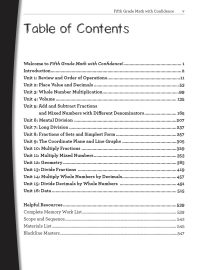

Fifth Grade Math with Confidence Instructor Guide
0 out of 5Starting at:$36.95Original price was: $36.95.$27.71Current price is: $27.71. Select options -
Sale!

Hansel & Gretel and Other Stories: Downloadable MP3
0 out of 5$12.95Original price was: $12.95.$9.71Current price is: $9.71. Add to cart -
Sale!

Dorothy and the Wizard in Oz: Downloadable MP3
0 out of 5$25.95Original price was: $25.95.$19.46Current price is: $19.46. Add to cart -
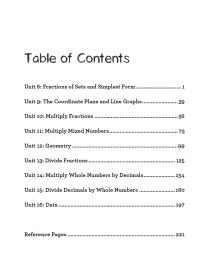 Sale!
Sale!
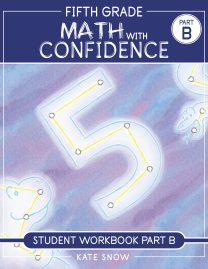
Fifth Grade Math with Confidence Student Workbook B
0 out of 5$16.46 – $21.56 Select options This product has multiple variants. The options may be chosen on the product page -
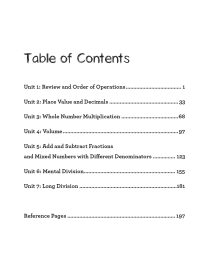 Sale!
Sale!
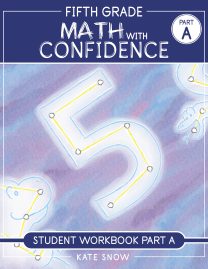
Fifth Grade Math with Confidence Student Workbook A
0 out of 5$16.46 – $21.56 Select options This product has multiple variants. The options may be chosen on the product page
ABOUT THE AUTHOR
Susan Wise Bauer
Join over 100,000 homeschooling families
For the latest offers, educational insights, products and more.
By joining you agree to our privacy policy.



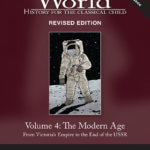
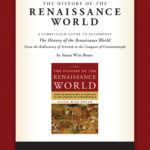

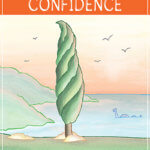




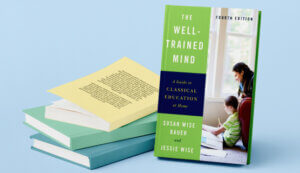
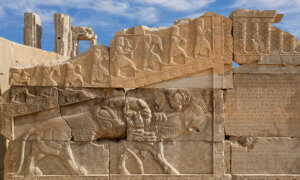





8 thoughts on “Five Events That Began the Renaissance (or Ended the Middle Ages)”
The Ottomans have a wonderful discipline and a wit of war. Tactics cannot be predicted and prevented. One of the greatest and fairest empires ever.
This was not helpful
The problems with this hypothesis that the “West” owes it’s renassiance to the Muslim world seems to be gaining popularity recently, however it doesn’t match the timeline of history. Fransesco Petraca was already reviving ancient text from church sources well before the fall of Muslim Spain. He didn’t travel to southern Europe for his research of archives but to Flanders and northern Europe.
Also the ideas of the Latins had been heavily influenced by the Greeks and to infer that those themes were only introduced to Europe after the discovery of Greek texts is groundless. The Latin ideas were Greek ideas. As for mathemetics being enhanced by the fall of Constantinople? and the subsequnt Greek exodus? Europeans didn’t have mathematical skills to do much with Ptolomey? Hmm I’m sure Filippo Brunelleschi living half a century before this might be a bit miffed being described as not having mathematical skills.
Lastly, the first crusade was not a result of the Byzantines under attack from the Ottomans. Osman 1st was 200 years after this.
I am sure that you are wrong in the Last part
There was no ottoman but there was Seljuk or Anatolian Seljuk Empire.
The fall of Constantinople in 1453 should be THE definitive event and date to demark middle ages and renaissance, or modern times. Specifically it was the use of super-cannons by the Turks to bring down the walls. As noted the cannons were capable of firing 7 foot stones or cannon balls.
No longer could people be assured of safety by a run to the nearest stone castle or fort to escape an attacking army. That would mean a standing army needed to be large to thwart invaders. Because the standing army, fortified by universal draft, needed to be huge the central government needed to be large and strong. Hence Kings supplanted the local lords. Taxes went to central government and with rich Kings the arts and letters could be supported. The King’s treasury could support science and technology to make bigger and better weapons, which led to more discoveries and the publication of these discoveries. Lots of roads and big ships for quick moment of troops, but also for trade goods.
Great reading. I learned so much! Thank you
I so appreciate you offering this for us to read and learn!
The Ottomans are a great discipline and a sharp wit in war. Strategies are impossible to predict and avoided. The greatest and fairest empires to ever exist. Thanks for sharing.